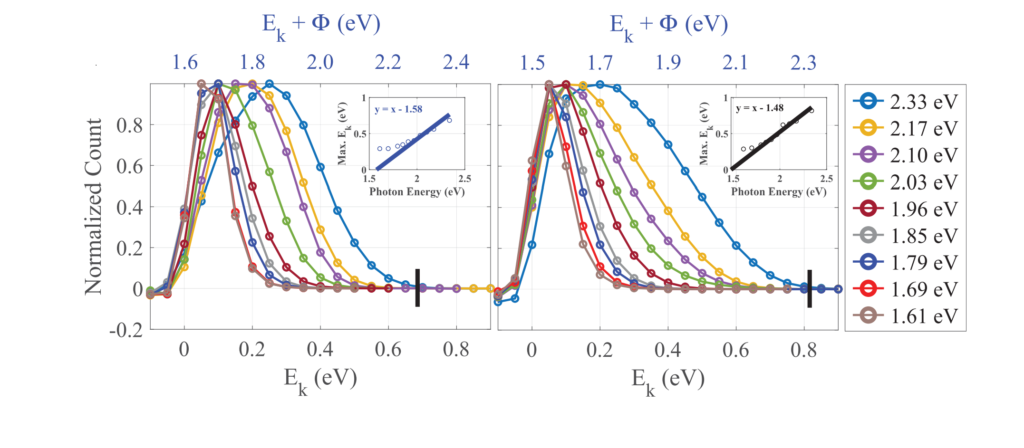Researchers from Arizona State University, Euclid Beamlabs, and Northern Illinois University have extended their previous collaboration to improve the performance of x-ray FELs, ultrafast electron diffraction, electron beam cooling and energy recovery linacs by demonstrating the thermal limit the mean transverse velocity (MTE), a critical parameter determining the brightness of electron beams used in linac-based applications.
In Demonstration of thermal limit mean transverse energy from cesium antimonide photocathodes a wide spectral range (1.5-2.3 eV) was used to determine the MTE, QE and photoelectron energy spectra of a polycrystalline cesium antimonide (Cs3Sb). With the increased spectral range and elegant experimental setup, a notably lower photoemission threshold was identified that subsequently showed the MTE convergence to the thermal limit at 300K. Thus, the MTE is determined by the excess photon energy (as theoretically predicted) instead of surface roughness as previously believed.

Photoemission electron energy spectra of Cs3Sb films on Si (l) and doped STO (r), for various excitation energies.
The low QE values (10E-7) at the new photoemission threshold of 1.5+/-0.1 eV open up opportunities for single crystal cathode materials and other alkali-antimonides that are expected to exhibit a range of features when operated at threshold using the wider spectral range.
See the entire article at Appl. Phys. Lett. 123, 044106 (2023) (https://doi.org/10.1063/5.0159924) Figure reproduced with the permission of AIP Publishing.

